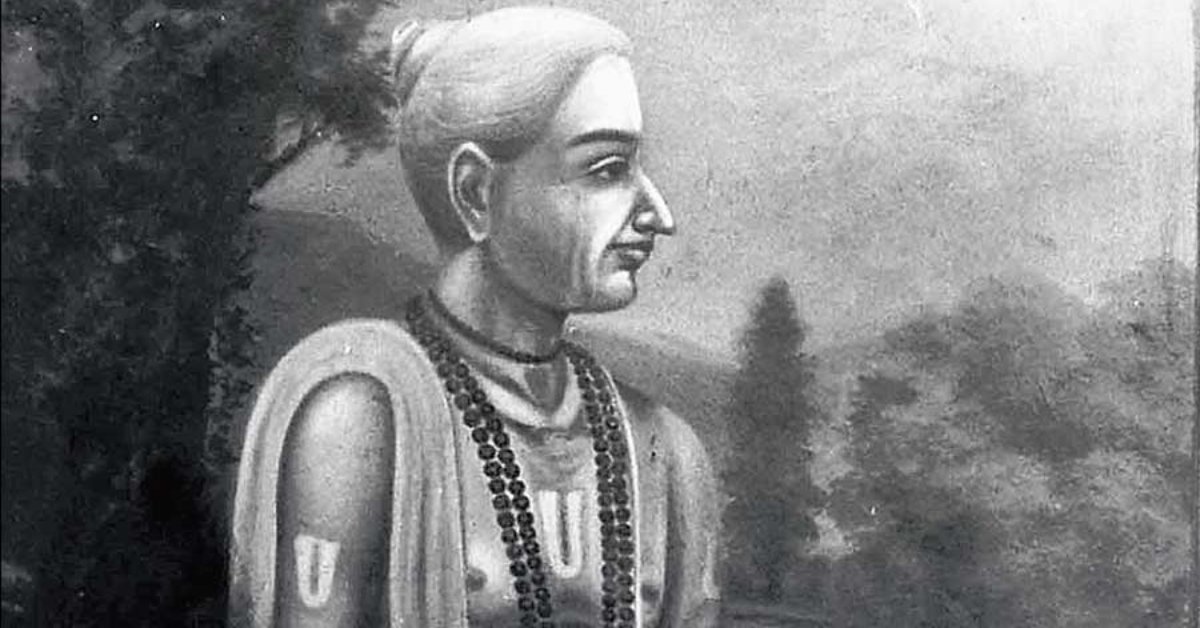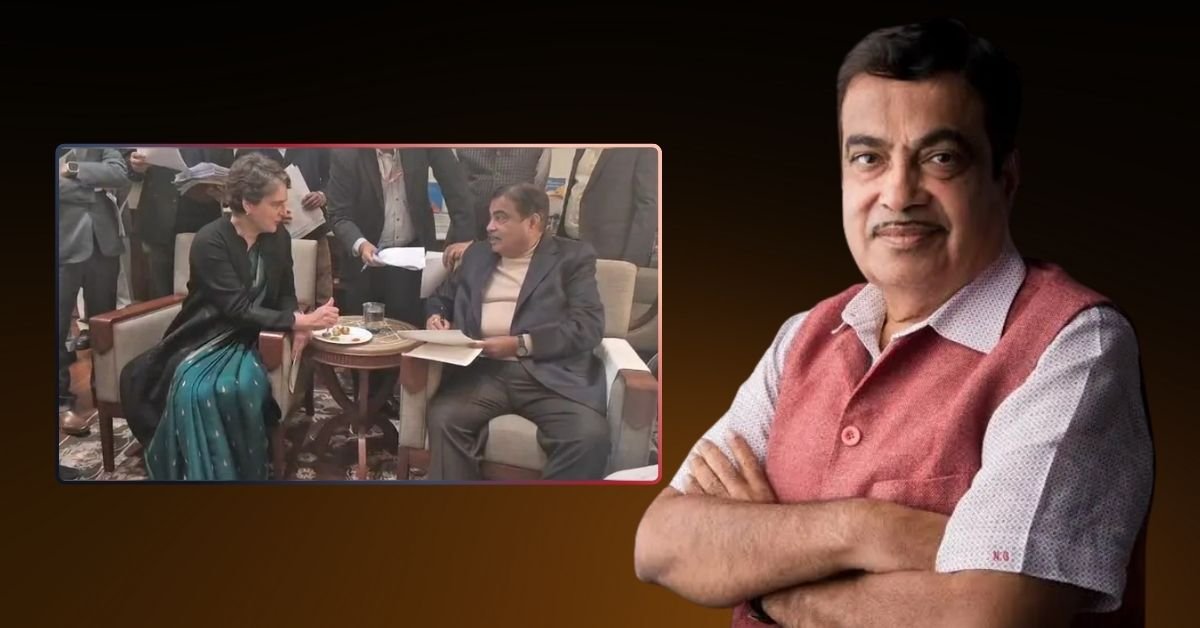Why Tulsidas, poet of Ramcharitmanas, slept in a masjid. This insightful read explores his ascetic life, social challenges, and spiritual legacy!
Table Of Contents
Introduction
In the rich tapestry of Indian spiritual history, Goswami Tulsidas stands as a towering figure.
Born in 1511, he is celebrated for his epic Ramcharitmanas, a retelling of Lord Ram’s life in Awadhi, a language that brought sacred stories to the masses.
His life was a profound journey of devotion, asceticism, and literary genius.
Among the many facets of his life, one question continues to intrigue scholars and devotees: Why did Tulsidas, a devout Hindu, choose to sleep in a mosque?
This decision, captured in his own words, “माँगिके खैबो मसीत को साइबो” (I will eat by begging and sleep in a masjid), offers a window into his spiritual and historical world.
This article explores the reasons behind this choice, weaving together his ascetic lifestyle, social challenges, historical context, and the universal message of his bhakti philosophy.
Early Life And Path To Asceticism
Tulsidas was born as Rambola Dubey in Rajapur, Uttar Pradesh, in 1511 to Hulsi and Atmaram Dubey.
His birth was steeped in legend: he reportedly stayed in his mother’s womb for twelve months, emerging with a full set of teeth and the appearance of a five-year-old.
Instead of crying, he uttered “Rama,” earning the name Rambola, as he later confirmed in his Vinay Patrika.
His early life was marked by hardship. Due to astrological concerns about his father’s safety, he was abandoned and raised by a maid named Chuniya in Haripur.
After her death, his guru Narharidas took him under his wing, initiating him into the Ramanandi sect and the worship of Lord Ram.
Tulsidas married Ratnavali as a young man, but his deep attachment to her became a turning point.
When she visited her father’s house without informing him, he followed her, prompting her to remark, “If you loved Lord Ram half as much as you love me, you would attain salvation.”
These words pierced his heart, leading him to renounce his family life and embrace asceticism.
This transformation set the stage for his life as a wandering sadhu, seeking shelter in places like mosques open to all.
The Ascetic Lifestyle: Living On Alms And Divine Grace
Asceticism in Hinduism involves renouncing worldly attachments to focus on spiritual liberation.
As a sadhu, Tulsidas lived a life of simplicity, begging for food and finding shelter wherever possible.
His choice to sleep in a mosque was a natural extension of this lifestyle.
As public spaces, mosques provided refuge for travelers and ascetics, regardless of faith.
In his Kavitavali, Tulsi Das writes, “माँगिके खैबो मसीत को साइबो लैबे को एक न देवे को दोऊ,” meaning, “I will eat by begging, sleep in a masjid, neither taking one nor giving two.”
This verse encapsulates his detachment from material possessions and reliance on Ram’s name for sustenance.
This choice was not merely practical but deeply symbolic.
By resting in a masjid, Tulsidas emphasized that divine presence transcends specific places of worship.
His asceticism was rooted in the Bhakti movement, prioritizing personal devotion over ritualistic practices.
This made his choice a powerful statement of spiritual universality.
Key Aspects of Tulsi Das’s Ascetic Lifestyle
| Aspect | Details |
|---|---|
| Renunciation | Abandoned family life after Ratnavali’s words, embracing a sadhu’s path. |
| Sustenance | Lived on alms, as reflected in “माँगिके खैबो” (I will eat by begging). |
| Shelter | Sought refuge in accessible places like masjids, as per Kavitavali. |
| Devotion | Relied solely on Lord Ram’s name, emphasizing spiritual over material needs. |
Social Challenges: The Awadhi Controversy
Tulsidas’s decision to write Ramcharitmanas in Awadhi, the vernacular language of the masses, was revolutionary.
Unlike Valmiki’s Sanskrit Ramayana, which is accessible only to scholars, his work brought Ram’s story to ordinary people.
This choice, however, drew criticism from conservative Brahmins who believed sacred texts should remain in Sanskrit, the language of the elite.
A popular legend recounts how Brahmins in Varanasi tested the worth of Ramcharitmanas by placing its manuscript at the bottom of a pile of Sanskrit scriptures in the Kashi Vishwanath Temple.
The next morning, it was found at the top, inscribed with “Satyam Shivam Sundaram” (truth, auspiciousness, beauty), signifying divine approval.
While there is no definitive evidence that Tulsidas was physically expelled from temples, this opposition likely created social friction.
Some accounts suggest that this criticism may have limited his access to traditional Hindu spaces, prompting him to seek shelter in mosques.
His resilience in such challenges underscores his commitment to making spirituality inclusive.
Social Factors Influencing Tulsi Das’s Choices
| Factor | Details |
|---|---|
| Language Choice | Wrote in Awadhi to reach the masses, breaking from the Sanskrit tradition. |
| Brahmin Opposition | Faced criticism for using vernacular language, as per the temple legend. |
| Possible Impact | Social disapproval may have led to seeking alternative shelters like masjids. |
Historical Context: The Mughal Era And Religious Dynamics
Tulsi Das lived during the Mughal Empire, a significant period of religious and cultural flux.
Mir Baqi, under Emperor Babur’s orders, constructed the Babri Masjid in Ayodhya in 1528–29, a pivotal event often linked to Tulsidas’s life.
Some sources speculate that he slept in the Babri Masjid as a form of devotion to the site he believed was Ram’s birthplace, though his writings do not explicitly confirm this.
For instance, in Kavitavali and Tulsi Dohashatak, he laments the destruction of sacred spaces, but scholars debate these references.
The Mughal era, particularly under Akbar (1556–1605) and later Aurangzeb, was marked by religious tensions.
Hindu ascetics faced challenges, including restrictions on temple access in certain areas.
Masjids, being open public spaces, offered a practical refuge.
Some narratives suggest Tulsidas’s choice was a subtle protest against the conversion of sacred sites, but his focus remained on spiritual devotion rather than political commentary.
Historical Context of Tulsi Das’s Time
| Event | Details |
|---|---|
| Mughal Rule | Lived during Akbar’s reign; religious tensions under later rulers like Aurangzeb. |
| Babri Masjid | Built in 1528–29, possibly on a Ram temple site, influencing local dynamics. |
| Impact on Ascetics | Limited access to Hindu temples may have led to seeking shelter in masjids. |
Textual Evidence: Insights From Tulsidas’s Works
Tulsi Das’s writings provide direct insight into his motivations.
In Kavitavali (Savaiya 248), he states, “माँगिके खैबो मसीत को साइबो लैबे को एक न देवे को दोऊ,” emphasizing a life free from worldly transactions, sustained by Ram’s name.
This verse reflects his ascetic ethos and suggests that sleeping in a masjid was a deliberate choice to embody humility and detachment.
Other works, like Vinay Patrika and Hanuman Chalisa, reinforce his devotion to Ram and his disregard for societal norms.
For example, in Ramcharitmanas, he writes, “नहिं दरिद्र कोउ दुखी न दीना। नहिं कोउ अबुध न लच्छन हीना॥” (There is no one poor, unhappy, or without wisdom or good qualities), highlighting his belief in universal spiritual potential.
His choice to mention masjids in his poetry may also reflect the Bhakti movement’s inclusive spirit, where devotion transcends religious boundaries.
Interfaith Harmony: A Universal Message
Tulsi Das’s decision to sleep in a masjid can be seen as a gesture of interfaith harmony.
His actions suggest that divine presence is not confined to specific places of worship in a time of religious division.
The Bhakti movement, of which he was a key figure, emphasized personal devotion over ritualistic exclusivity, aligning with his choice to rest in a masjid.
This resonates with modern calls for unity, reminding us that spirituality can bridge divides.
His writings, particularly Ramcharitmanas, convey universal themes of love, duty, and morality, appealing to people across faiths.
By choosing a masjid as a place of rest, Tulsidas may have been embodying the idea that devotion to God is a shared human experience, regardless of religious labels.
Legacy And Cultural Impact
Tulsi Das’s influence on Indian culture is profound.
Ramcharitmanas remains a cornerstone of Hindu literature, recited in homes, temples, and during festivals like Ramlila, a tradition he is credited with starting.
His Hanuman Chalisa is equally revered, chanted by millions for spiritual strength.
His works have inspired poets, artists, and devotees, shaping North India’s religious and cultural landscape.
His life, marked by humility and devotion, continues to inspire.
The story of his sleeping in a masjid underscores his commitment to a universal spirituality, making him a timeless figure in India’s spiritual heritage.
Tulsi Das’s Major Works And Their Impact
| Work | Description | Impact |
|---|---|---|
| Ramcharitmanas | Epic retelling of Ramayana in Awadhi, with seven kandas. | Widely recited, popularized Ram’s story inspired the Ramlila tradition. |
| Hanuman Chalisa | 40-verse hymn praising Hanuman, written in Awadhi. | Chanted for spiritual strength, a staple in devotional practices. |
| Kavitav “माँगिके खैबो मसीत को साइबो” | A collection of poems in Braj, reflecting devotion and asceticism. | Provides insight into his lifestyle and spiritual philosophy. |
| Vinay Patrika | A collection of devotional hymns, expressing surrender to Ram. | Used in worship, reinforces bhakti themes. |
Conclusion
Tulsi Das’s choice to sleep in a masjid was a multifaceted decision rooted in his ascetic lifestyle, shaped by social challenges, and influenced by the historical context of the Mughal era.
His words in Kavitavali reveal a life dedicated to humility and devotion to Lord Ram, where choosing a masjid as a resting place symbolized his detachment from worldly concerns and his universal approach to spirituality.
While some narratives link his actions to the Babri Masjid, the evidence leans toward his ascetic practices as the primary driver, with social and historical factors as secondary influences.
His legacy, embodied in Ramcharitmanas and other works, inspires millions and teaches us the power of faith, humility, and unity.
We invite you to explore more stories of India’s spiritual giants on our THOUSIF Inc. – INDIA website.
Trivia
Did you know that Tulsidas is believed to have had a vision of Lord Hanuman, who inspired him to write Ramcharitmanas? Legend has it that Hanuman guided him to compose the epic in Awadhi, ensuring its accessibility to all, a testament to his mission of spreading devotion.






